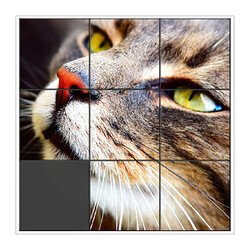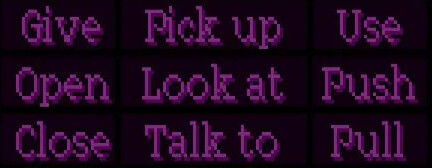I haven’t played much choice-based IF that presented any particular puzzles of note.
The power of parser puzzles is that you really need to think about how you want to accomplish a task and see if the game is accepting of that conclusion. It requires a bit of strategy and analysis in an environment of seemingly endless possibilities. How do we get that “endless possibilities” vibe in a choice-based game?
The one weakness of choice games is that you can progress without much thought. You click on things and reading the prose is even optional, to be completely honest; the possible choices will always be there, waiting for you. With parser games, even simple deductive puzzles (hit nail with hammer) are satisfying as the answer comes completely from your mind without any prompting. Choice games always distract you from critical thinking with constant suggestions (i.e. possible choices).
I’ve thought a bit about how I would like to implement choice-based puzzles if I ever made a choice game.
1.) All choice engines allow for text input. So while it wouldn’t be a parser to navigate the world and explore it, you might come to parts where you need to know the “answer” to continue. What could it possibly be? These kinds of puzzles push your mind to contemplate the context from which question is being asked, given all that you have explored thus far. It could also be a simple riddle (Q: What gets wetter the more it dries? A: A towel.), but that doesn’t tie into a game’s world in a satisfying manner typically. What is the deceased man’s password to his computer? That is way more satisfying to try and answer.
2.) Choice-based games allow you to “drag and drop” (or some pseudo-form of this) and some games allow combinations of symbols, numbers, etc. This would allow either a combination password to exist or even a set of instructions to be carried out. (Programming a robot to perform a task, for example.) Because the combinations would be quite large, it would require some thought and analysis in most cases and won’t allow for brute force. Brute force is something that you don’t want to make appealing/effective at all or players will do it… and they’ll hate the game for it. Stretch the idea further and you could do the sliding image puzzles… or even crazier stuff.
3.) Then there is bringing some of the freedom that parser games afford into the choice-based engine; like the point-and-click command style of Monkey Island.
Except without a graphic scene, you click on the nouns in the room’s description prose. (The nouns would not look clickable though.) There could be variants of this style, but essentially it’s about a parser-like experience without the typing.
4.) Lastly, pure strategy elements as puzzles work well in choice-based IF due to mouse and touch controls. (Tower of Hanoi and other things like that; The 7th Guest comes to mind.) Because choice-based is typically browser-based, images are second nature to work with in choice games.
Puzzles don’t need to look like art either; diagrams are just as effective when it comes to presenting a puzzle and conveying the state of the puzzle. Use PowerPoint to make your graphics, if you want.
When you mentioned that player’s hate mazes in parser games, I believe it translates to players don’t like things that are visually complex in a medium than restricts all visual aids. For example, if you coded a working game of checkers in a parser engine, would you want to play it with text descriptions only? That’s pretty hardcore and asking for a lot of mental energy. So we dumb things down a bit to tic-tac-toe and it’s still challenging to visualize, but not maddening. Parser games need to keep the mazes dumbed down, is all.
Anyway, just my two cents.


